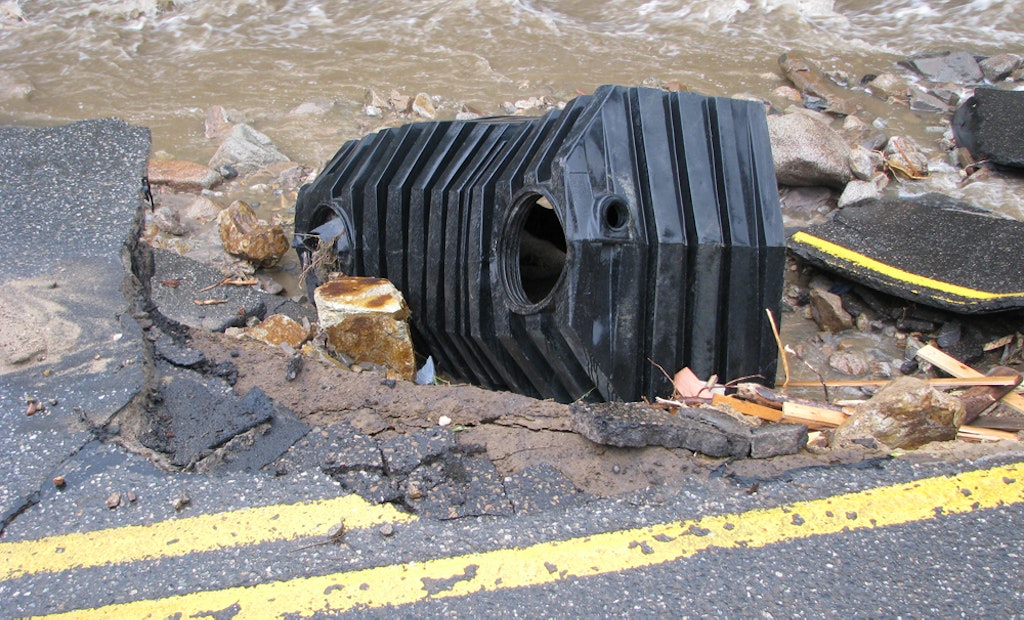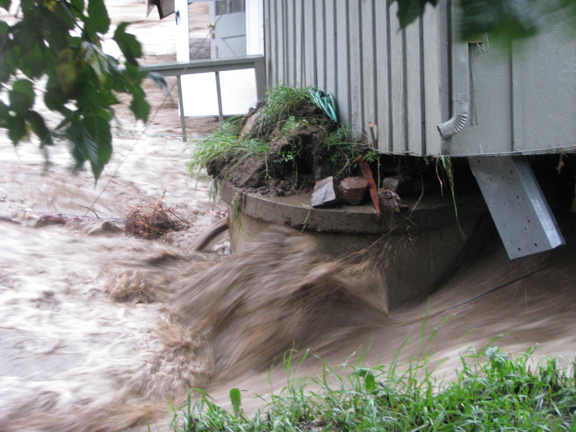
Interested in Systems/ATUs?
Get Systems/ATUs articles, news and videos right in your inbox! Sign up now.
Systems/ATUs + Get AlertsI recently received photos from a homeowner in Boulder County, Colo., showing the effects of a series of catastrophic flash floods that hit last summer. The homes and onsite systems hit by the floods underwent massive rebuilding and restoration. In some areas, floodwaters rose and spread out, covering entire onsite treatment systems, including septic tanks, pumps and drainfields.

If you are in a flood-prone area, now is the time to get prepared — and educate homeowners — for potential onsite system flooding. Our approaching Midwest spring — and major thaw out — following subzero temps and record-breaking snowfall this winter means installers in this area should expect flooding at systems along major rivers and streams.
The Colorado flooding happened very quickly over several days, but in the Midwest, for instance, flooding often occurs over weeks and months as temperatures slowly rise and the ground thaws. This gives onsite service providers in flood-prone areas the opportunity to protect customers’ onsite systems before floodwaters get out of control. For example, with new construction in these areas, onsite systems should be installed more than six inches above the 10-year flood elevation level to prevent any possible flooding damage.
Once heavy rains start to fall and a flood is underway, tell homeowners to cease water usage going to the system. Depending on the elevation of the septic tank and floodwaters, the tank can be used as a holding tank. The amount of damage to the system is related to the elevation of the flooding over the system combined with the length of time the system is flooded.
When evaluating systems during flooding, make sure all inspection ports, lids and covers are properly capped and in place. Pumps and controls in the system can be removed and stored, and remember to shut off electricity to the system. There should be no connections between floor or foundation drains in the house to the system where water can drain through the system.
After floodwaters recede, you should complete a comprehensive system inspection and assessment before the system is put back into operation. This should include the following steps:
- Open all parts of the system, wherever there is an access to system components, including septic tanks and drop boxes.
- Remove any sediment or vegetative debris that has entered any part of the system.
- Pump and clean out all septic tanks, and then evaluate them for watertightness and any structural defects due to the flooding.
- If the system includes pumps and a pressure distribution system, distribution laterals should be jetted and cleaned.
- Reinstall, recalibrate and test all pumps and controls before putting the system back in service.
The overall evaluation should include a check of the wastewater to ensure it is flowing properly through all system components. You may have to run a hydraulic load test on the soil treatment part of the system.
About a month after the system has been restarted, you should do a follow-up visit to check whether the system has continued to operate properly. Check pumps and controls, and re-evaluate pump calibrations to ensure they are delivering the correct amount of effluent.
About the Author

Jim Anderson is connected with the University of Minnesota onsite wastewater treatment education program, is an emeritus professor in the university’s Department of Soil Water and Climate, and education coordinator for the National Association of Wastewater Technicians.
Send him questions about septic system maintenance and operation by email to kim.peterson@colepublishing.com.





